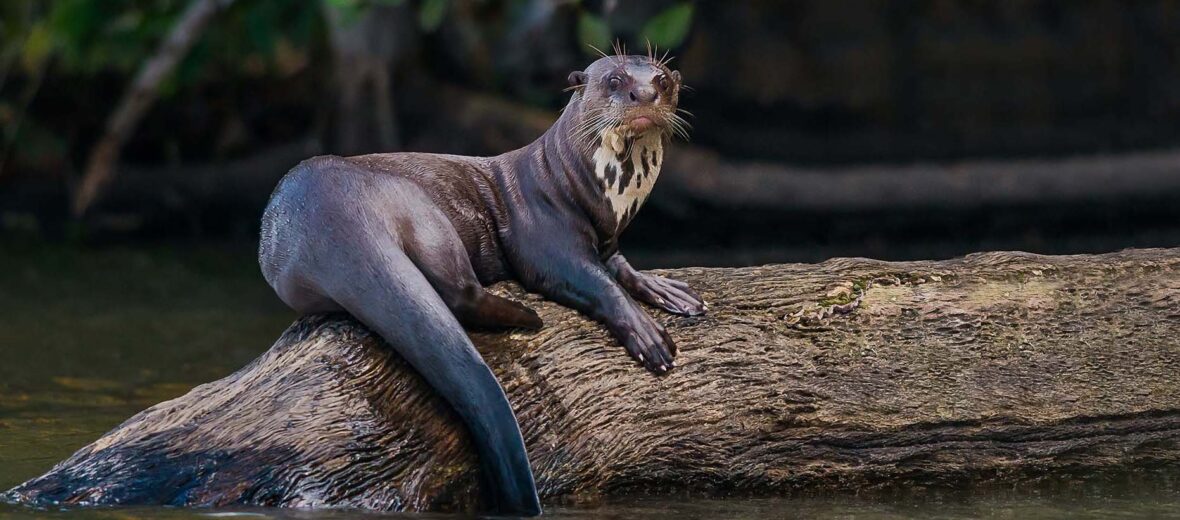
The giant river otter is endemic to South America and more specifically the Amazon, Orinoco, and La Plata River systems. These otters like slow-moving rivers, swamps, lakes, and flooded forests. They belong to the mustelid family. Their numbers have dropped dramatically due to over hunting (for their fur), human encroachment, and mercury poisoning from mining. The IUCN has listed them as Endangered.
First the Stats…
Scientific name: Pteronura brasiliensis
Weight: Up to 71 lbs.
Length: Up to 4 feet
Lifespan: Up to 17 years
Now on to the Facts!
1.) These otters can swim at speeds of up to 9 mph.
2.) Giant otters have the ability, like other otters, of closing their ears and nostrils, when diving, to keep water out.
3.) Jaguars and humans are their main predators. They also fall prey to the adult versions of what they hunt… anacondas and caimans.
4.) River otters consume approximately 10 lbs. of food per day!
5.) Their primary foods of choice are crabs, fish, young caimans, and juvenile anacondas.
But wait, there’s more on the giant river otter!
6.) They live in family groups (also called a bevy or romp) that consist of 4 – 10 otters.
7.) Besides having good eyesight, river otters also use their sensitive whiskers to detect motion in the water.
Did you know…?
Giant Otters have evolved independently from the sea and the river otters in the continent of South America.
8.) Giant river otter cubs are born totally covered in fur. This species is one of the only known mammalian carnivores with a fur-covered nose.
9.) 9 different types of sounds are made by these critters, like barks, screams, snorts, low growls, and more.
10.) Otters mate throughout the year in the Amazon, but the babies are typically born during the dry season.
Now a Short Giant River Otter Video!
Also, check out the Critter Science YouTube channel. Videos added frequently!
Want to suggest a critter for me to write about? Let me know here.



